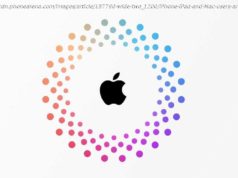Samsung has just unveiled its most powerful smartphone for the year 2018, Galaxy S9 and the Galaxy S9+. The firm at the time of the launch said that it will bring the handset to select markets starting March 16 but did not confirmed anything about it’s availability in India. Now, Gadgets Now has separately confirmed that the two smartphones will be launching in India on March 6 and will probably
NEW DELHI: Samsung has just unveiled its most powerful smartphone for the year 2018, Galaxy S9 and the Galaxy S9+. The firm at the time of the launch said that it will bring the handset to select markets starting March 16 but did not confirmed anything about it’s availability in India. Now, Gadgets Now has separately confirmed that the two smartphones will be launching in India on March 6 and will probably hit the shelves starting March 16. The South Korean tech firm has also started sending out media invitations for the March 6 event. The prices of the two smartphones are a secret for now. However, they will probably be more than the prices of the Galaxy S8 smartphones when they launched, if not the same. The Galaxy S8 and the Galaxy S8+ launched in India at Rs 57,900 (MOP) and Rs 64,900 (MOP). For the Galaxy S9 and the Galaxy S9+, the price could start at Rs 60,000 and Rs 70,000. But that’s just a wild guess for now. Flipkart has already teased the arrival of the two smartphones, indicating an exclusive online sales partnership. For those unaware, in the US, the Galaxy S9 is priced at $720 (roughly Rs 46,700) and the Samsung Galaxy S9+ is priced at $840 (roughly Rs 55,000). They have been launched in Midnight Black, Titanium Gray, Coral Blue and Lilac Purple colour variants. Samsung Galaxy S9 runs Android 8.0 Oreo (Knox 3.1) out of the box. It has a 5.8-inch Quad HD + Curved Super AMOLED screen with 18.5:9 aspect ratio, while the Galaxy S9+ has a 6.2-inch Quad HD + Curved Super AMOLED screen onboard. The South Korean tech firm is touting the cameras of the two new smartphones. The Galaxy S9 features a 12MP Super Speed Dual Pixel camera with autofocus sensor and OIS. The smartphone’s camera has a new dual aperture lens that automatically shifts from F1.5 to F2.4 based on dark and light environments. The Galaxy S9+ has an additional 12MP rear telephoto camera lens with f/2.4 aperture. At the front you get an 8MP sensor with f/1.7 aperture. Running on an octa-core Qualcomm Snapdragon 845 (or Exynos 9810) processor made using 10nm process, the Galaxy S9 sports a 4GB RAM, while the Galaxy S9+ boasts of 6GB RAM. Both come in three variants based on storage capacities – 64GB, 128GB and 256GB. The device also supports microSD card up to 400GB. The Galaxy S9 packs 3000mAh battery with fast wired charging tech. It also comes with wireless charge support. The S9+ on the other hand packs a 3500mAh battery. Besides the camera, two other features that Samsung is heavily marketing for the Galaxy S9 and the Galaxy S9+ are AR Emoji and Bixby. AR Emoji uses AI to analyse 2D image of the user and creates a 3D model reflecting the user’s facial expressions. “AR Emoji shares users’ real-life emotions not only in video but also with a range of stickers and uses a standard AGIF file format so users can share their emojis across most third-party messaging platforms,” says the firm. Bixby too has been upgraded. It can now generate information directly on top of the image that the smartphone camera is pointing at. It can also translate foreign languages and currency in real time. The Galaxy S9 and the Galaxy S9+ support Dolby Atmos and are compatible with the next-gen DeX docking system. “With the DeX Pad, a new docking system, users can easily connect the Galaxy S9 and S9+ to a larger monitor, keyboard and mouse to expand the mobile experience with enhanced document editing or even full-screen gaming,” says the firm. On the design front, the Galaxy S9 and the Galaxy S9+ appear similar to that of the Galaxy S8 handsets. However, the fingerprint sensor has been moved from the side of the rear camera to the bottom of the setup.






